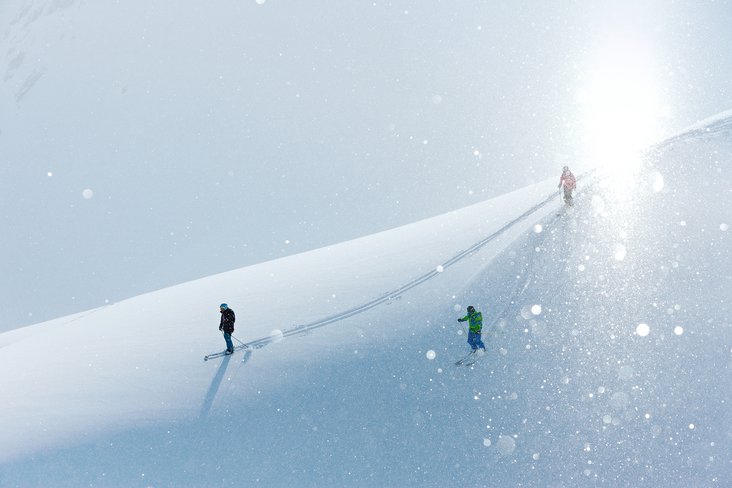Good preparation, careful assessment of the local avalanche danger and adapting one’s behaviour to the conditions could prevent many of the over one hundred avalanche accidents that occur in Switzerland every year. Thus prevention – in other words, avoiding getting caught in an avalanche altogether – is the number one priority. Even so, it is important to be prepared for that eventuality, because even the best rescue cannot help all avalanche victims.
Basic knowledge and preparation
General information on avalanches, the different types, and the factors influencing their formation is available from the Institute for Snow and Avalanche Research (SLF) in Davos. Being armed with the necessary basic knowledge makes it possible to identify potential dangers later on in the terrain and to act accordingly. The SLF avalanche bulletin gives details of the current avalanche risk. It is published twice a day and rates avalanche danger on a five-point scale. The risk of avalanche can vary considerably from place to place, so we recommend checking the local conditions again with the mountaineering centre or the mountain transport company in your chosen area. Experienced ski tourers will also constantly reassess the situation throughout the tour and, depending on the time of day, take account of rising temperatures. This acquired knowledge and careful preparation alone make it possible to minimise risk in the terrain by accordingly adapting one’s behaviour to the conditions.
Avalanche equipment
An important part of prevention is also having the correct equipment: the standard emergency gear for snow sports enthusiasts who venture beyond secured slopes and routes comprises an avalanche transceiver, a shovel and a probe. A modern three-antenna avalanche transceiver is recommended, as those with little practice can also use it to quickly locate a buried person - provided that the victim’s transceiver is set to "transmit". An avalanche airbag additionally reduces the risk of being completely or partially buried by an avalanche. While this emergency equipment does not protect against avalanches, it can help to increase the chances of survival in an emergency. Other useful gear to have in your backpack: climbing aids, a first aid kit, a mobile phone or radio transmitter, orientation devices and protection against the sun and cold.
What to do if an avalanche is set off
However much planning and care go into your trip, you may till have the misfortune of being buried in an avalanche or witness somebody who is. What you should do in such a situation is outlined below.
If you are caught in an avalanche yourself:
- Try to move sideways out of the avalanche path, let go of your poles
- Operate any protective gear (airbag, etc.)
- As long as the snow is still moving: try to stay on the surface
- Before the snow flow stops: cup your hands over your nose and mouth and try to keep your airways as free as possible
If you witness an avalanche accident:
- Observe the descent of the avalanche and anyone caught in it very carefully (time/place last seen)
- Keep yourself safe
- Take stock of the situation
- Alert the rescue services (emergency number 1414 or Rega app)
- Begin companion rescue
Further information:
